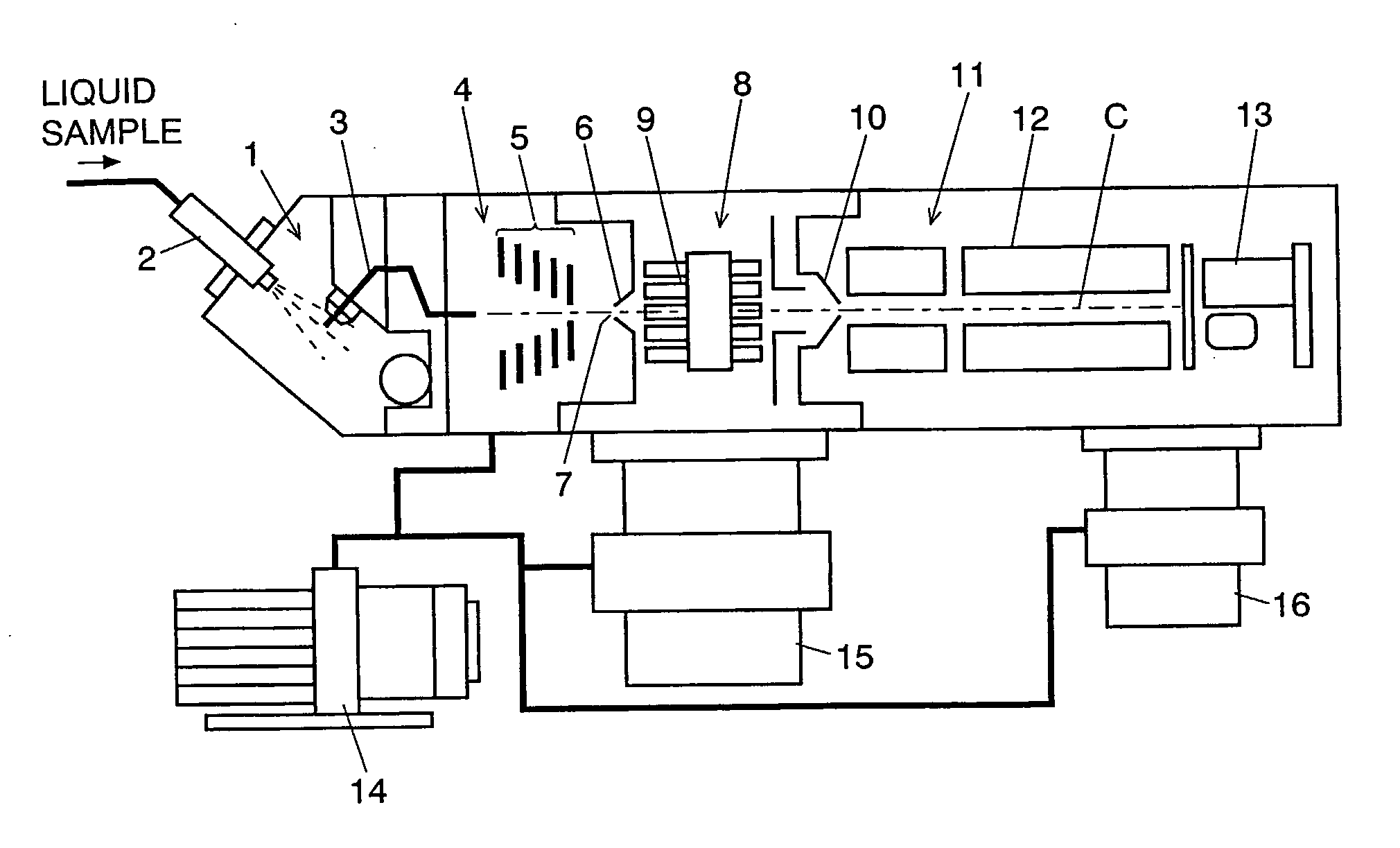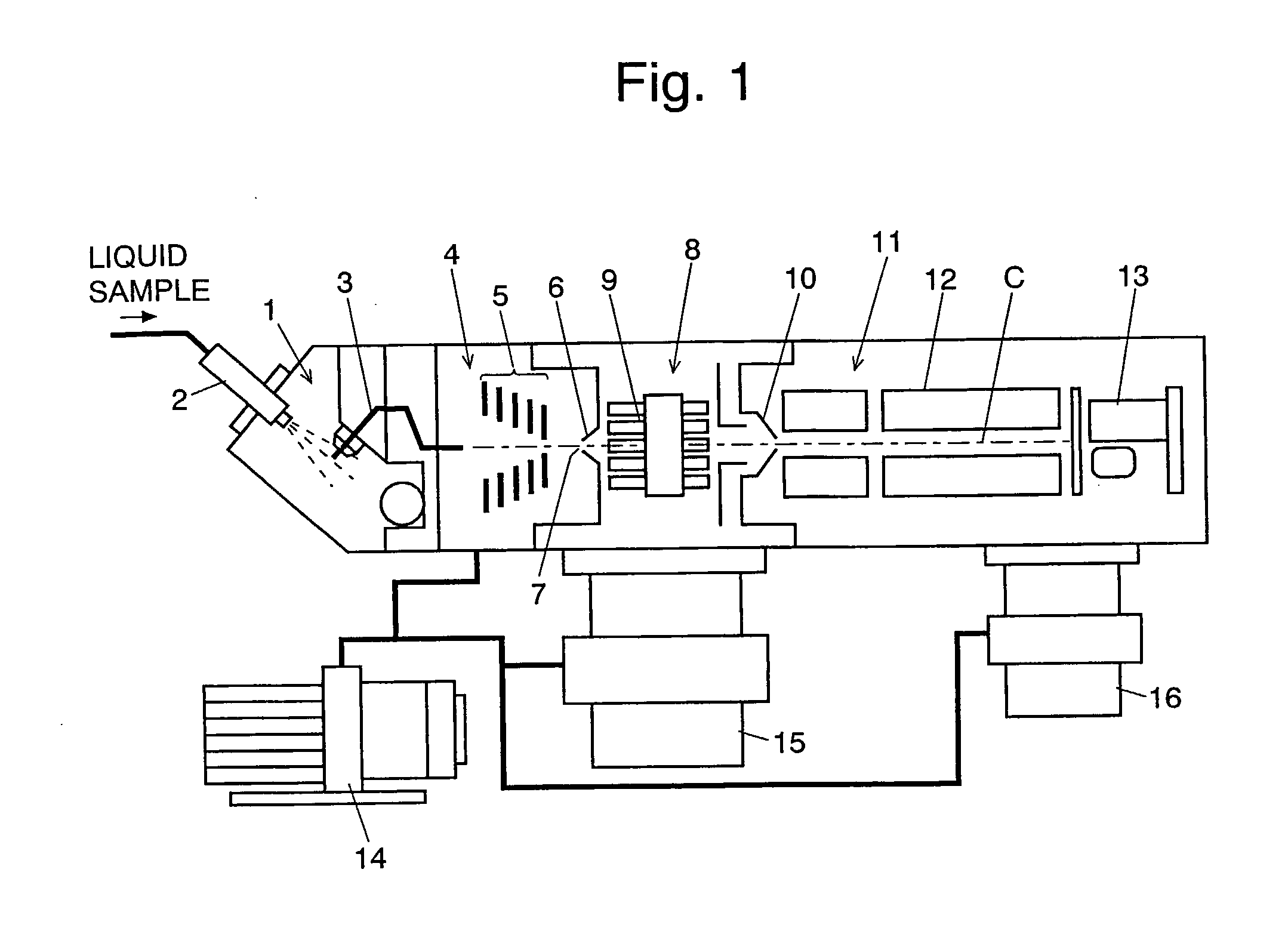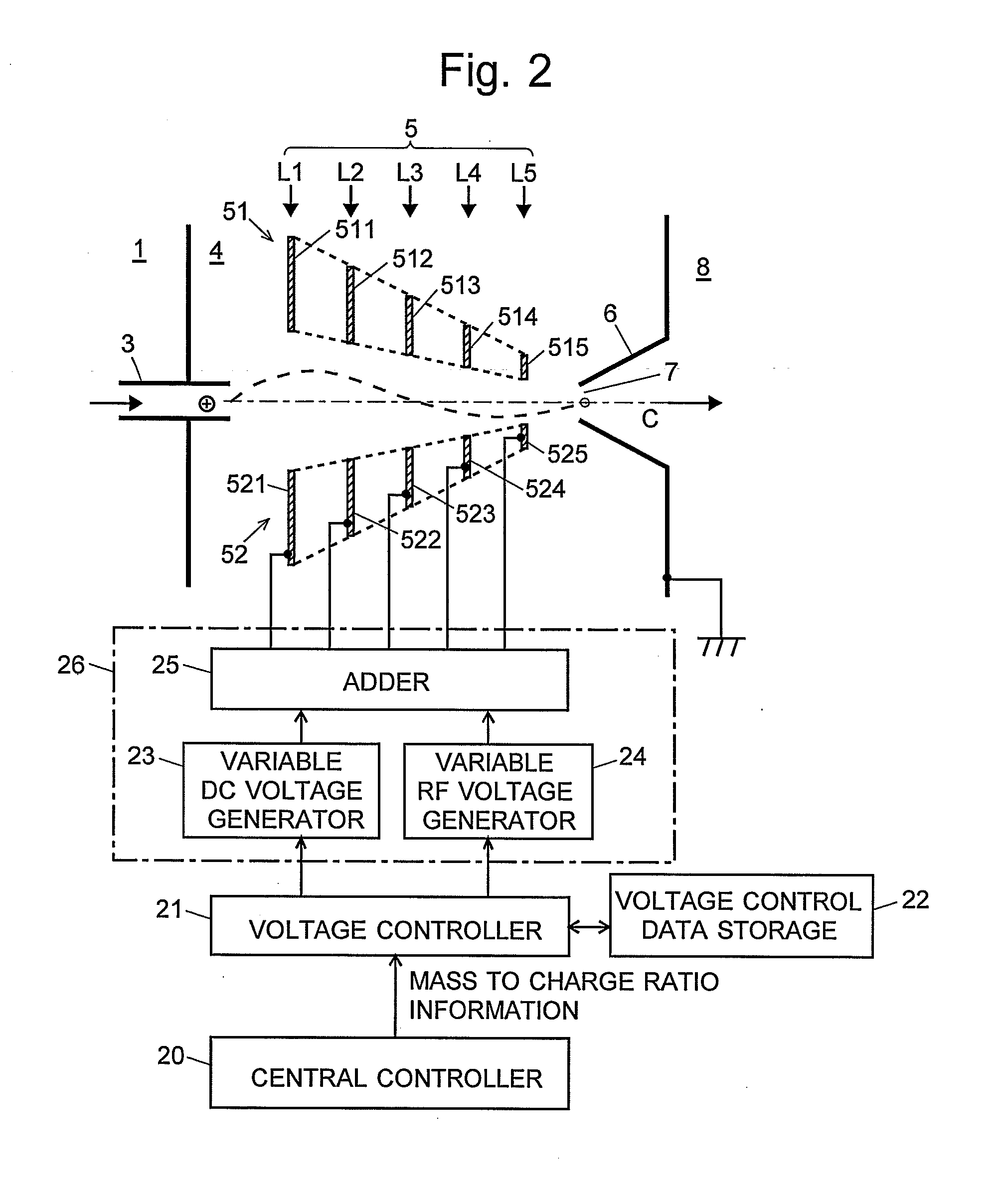Mass Spectrometer
a mass spectrometer and mass spectrometer technology, applied in the field of mass spectrometers, can solve the problems of increasing the amplitude of high frequency ac voltage or dc voltage, difficult to improve the ion transport efficiency of the ion lens, and ions can lose a significant proportion of their kinetic energy, so as to achieve the effect of further improving the ion transport efficiency
- Summary
- Abstract
- Description
- Claims
- Application Information
AI Technical Summary
Benefits of technology
Problems solved by technology
Method used
Image
Examples
Embodiment Construction
[0065]As an embodiment of the mass spectrometer according to the present invention, an electrospray ionization mass spectrometer (ESI-MS) is described with reference to the attached drawings. FIG. 1 is a diagram showing the overall construction of the ESI-MS.
[0066]In FIG. 1, the mass spectrometer includes an ionization chamber 1 having a nozzle 2 connected to the exit end of the column of a liquid chromatograph (not shown) or a similar device, an analyzing chamber 11 enclosing a quadrupole mass filter 12 as the mass analyzer and an ion detector 13, and a first intermediate vacuum chamber 4 and a second intermediate vacuum chamber 8 partitioned by walls between the ionization chamber 1 and the analyzing chamber 11. The ionization chamber 1 and the first intermediate vacuum chamber 4 communicate with each other through a desolvating pipe 3 of a small diameter. The first intermediate vacuum chamber 4 and the second vacuum chamber 8 communicate with each other through a skimmer 6 having...
PUM
 Login to View More
Login to View More Abstract
Description
Claims
Application Information
 Login to View More
Login to View More - R&D
- Intellectual Property
- Life Sciences
- Materials
- Tech Scout
- Unparalleled Data Quality
- Higher Quality Content
- 60% Fewer Hallucinations
Browse by: Latest US Patents, China's latest patents, Technical Efficacy Thesaurus, Application Domain, Technology Topic, Popular Technical Reports.
© 2025 PatSnap. All rights reserved.Legal|Privacy policy|Modern Slavery Act Transparency Statement|Sitemap|About US| Contact US: help@patsnap.com



